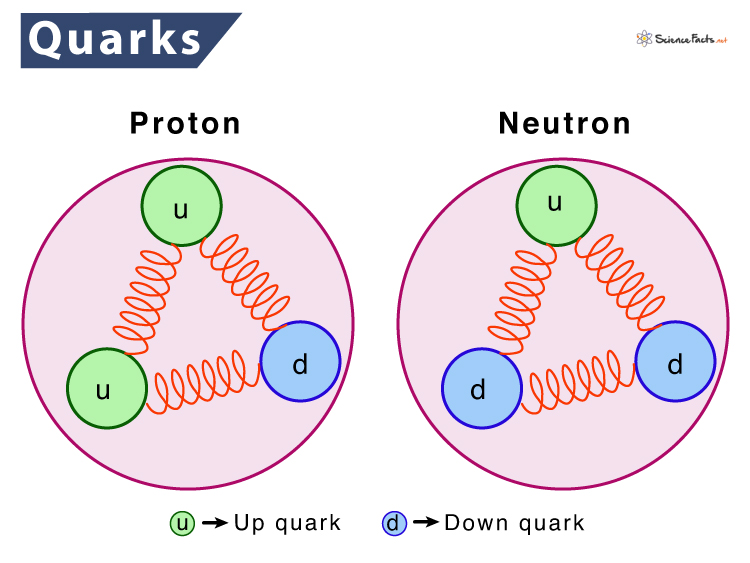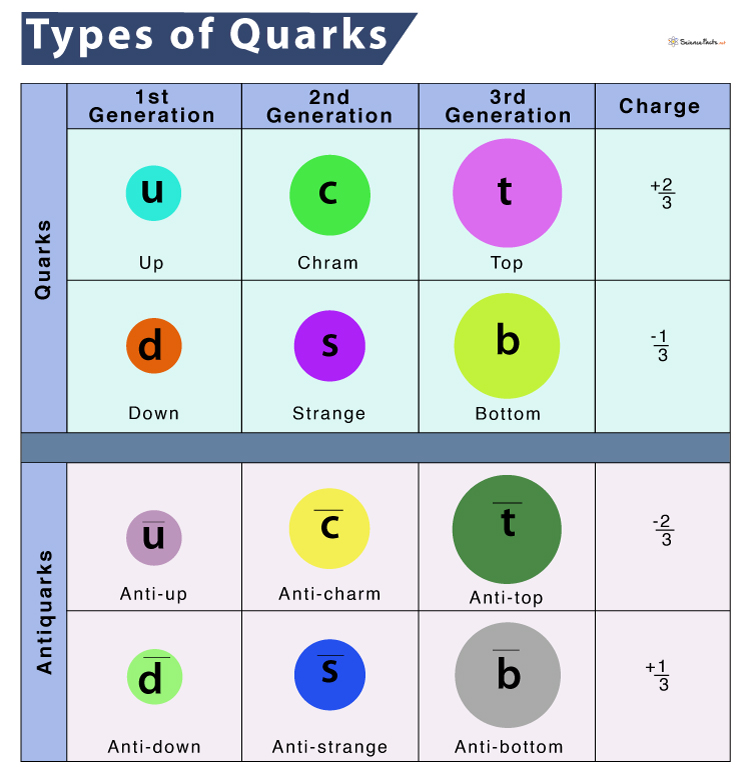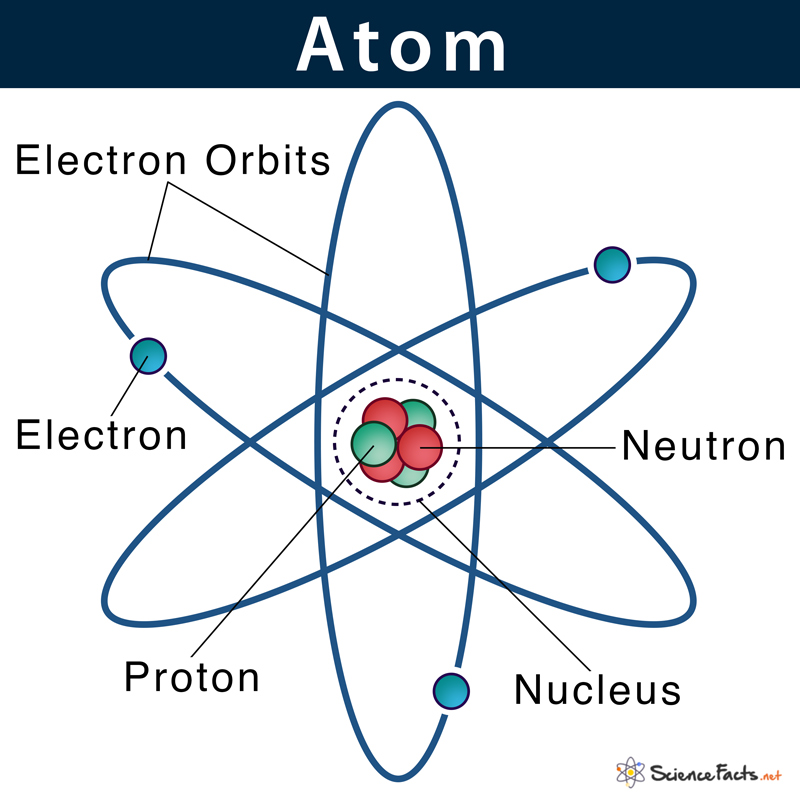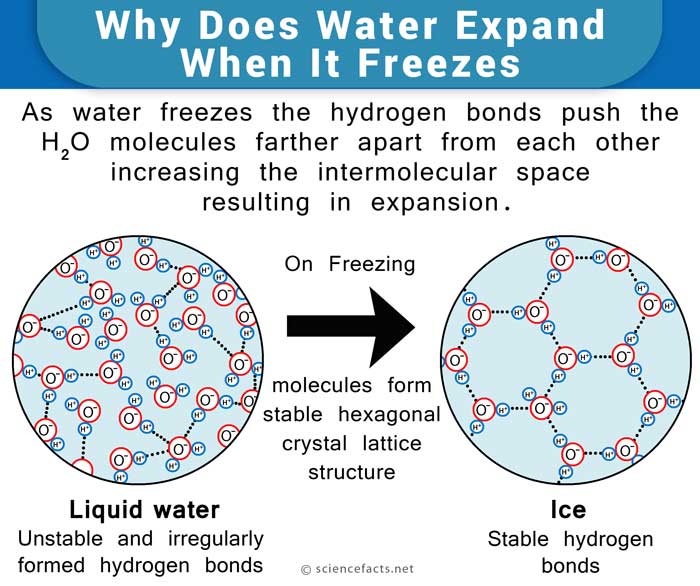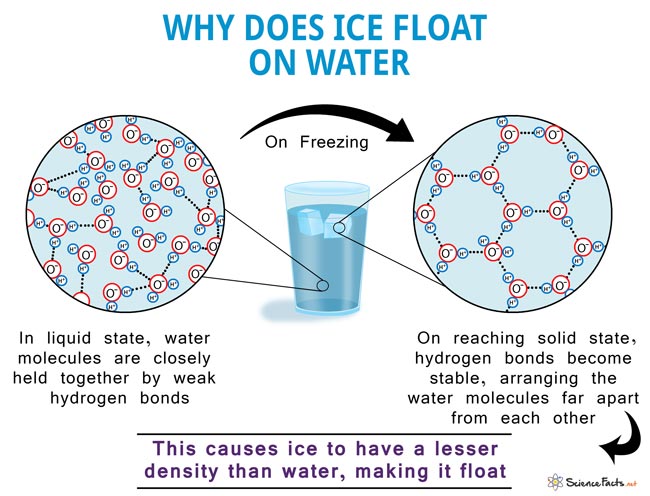Quark
An atom consists of three fundamental particles: an electron, a proton, and a neutron. However, scientific discoveries have come thick and fast over the past century. Understanding the structure of the atom has led to the discovery of some more elementary particles. One of them is quark.
What are Quarks
Quarks are a fundamental building block (size ~10−18 m) of matter found in an atom. The other one is leptons. They give an account of all mesons and baryons. The most familiar baryons are the protons and neutrons, which consist of quarks. Quarks are not made of anything. They join to form composite particles called hadrons. The most stable of them are protons and neutrons, the components of atomic nuclei.
How were Quarks Discovered
In 1963, American physicists Murray Gell-Mann and George Zweigon experimented with the Stanford linear accelerator. During this experiment, electrons were fired at protons, which were found to bounce off. Scientists thought there must be some charged tiny sub-particles within protons, due to which the electrons are getting bounced off.
Later, Murray Gell-Mann named these unusual particles quarks’ influenced by the James Joyce novel ‘Finnegans Wake’.
Types and Charges of Quarks in an Atom
Quarks are found to exist in six flavors. They are now commonly designated up, down, strange, charmed, bottom, and top. Each contains a fractional value of the electron charge (i.e., a charge less than that of the electron, e).
Each proton and neutron contain three quarks; however, they are of two types. Each up quark contains a charge of +2/3. In contrast, each down quark has a charge of -1/3. The sum of the quark charges making up a nuclear particle gives its electrical charge.
- A proton includes two up quarks and one down quark. Thus it has a total charge of +1.
+2/3 +2/3 -1/3 = +1
- A neutron includes one up quark and two down quarks, thus with a total charge of 0.
+2/3 -1/3 -1/3 = 0
Strange quarks had charge −1/3e occur as components of K mesons and various other highly short-lived subatomic particles. All quarks have a baryon number (B = 1/3) and a lepton number (L = 0). There is an antiparticle known as an antiquark for every quark flavor. It has equal magnitude but different electric charges and opposite signs.
The flavor also determines other unique properties, such as a quark’s mass, spin, and parity, which are impossible to measure directly. It is because quarks are not observed independently but combined with other quarks. This property is called ‘quark confinement.
The following table outlines each of the different flavors of quarks and their properties:
| Type of Quark | Symbol | Mass (in MeV/c2) | Charge (proportion of e) | Weak Isospin | Baryon number (B) | Name of Antiparticle | Symbol of Antiparticle |
|---|---|---|---|---|---|---|---|
| 1.Up | u | 1.5 to 4.0 | +2/3 | +1/2 | +1/3 | antiup | u |
| 2. Down | d | 4 to 8 | -1/3 | -1/2 | +1/3 | antidown | d |
| 3. Strange | s | 80 to 130 | -1/3 | -1/2 | +1/3 | antistrange | s |
| 4. Charm | c | 1150 to 1350 | +2/3 | +1/2 | +1/3 | anticharm | c |
| 5. Top | t | 170200 to 174800 | +2/3 | +1/2 | +1/3 | antitop | t |
| 6. Bottom | b | 4100 to 4400 | 1/3 | -1/2 | +1/3 | antibottom | b |
The quarks and antiquarks in an atom are divided into three (first, second, and third) generations as shown in the diagram below with their charges.
FAQs
Q.1. What is smaller than a quark
Ans. In particle physics, preons are point particles found as sub-components of quarks and leptons
-
References
Article was last reviewed on Friday, February 17, 2023

